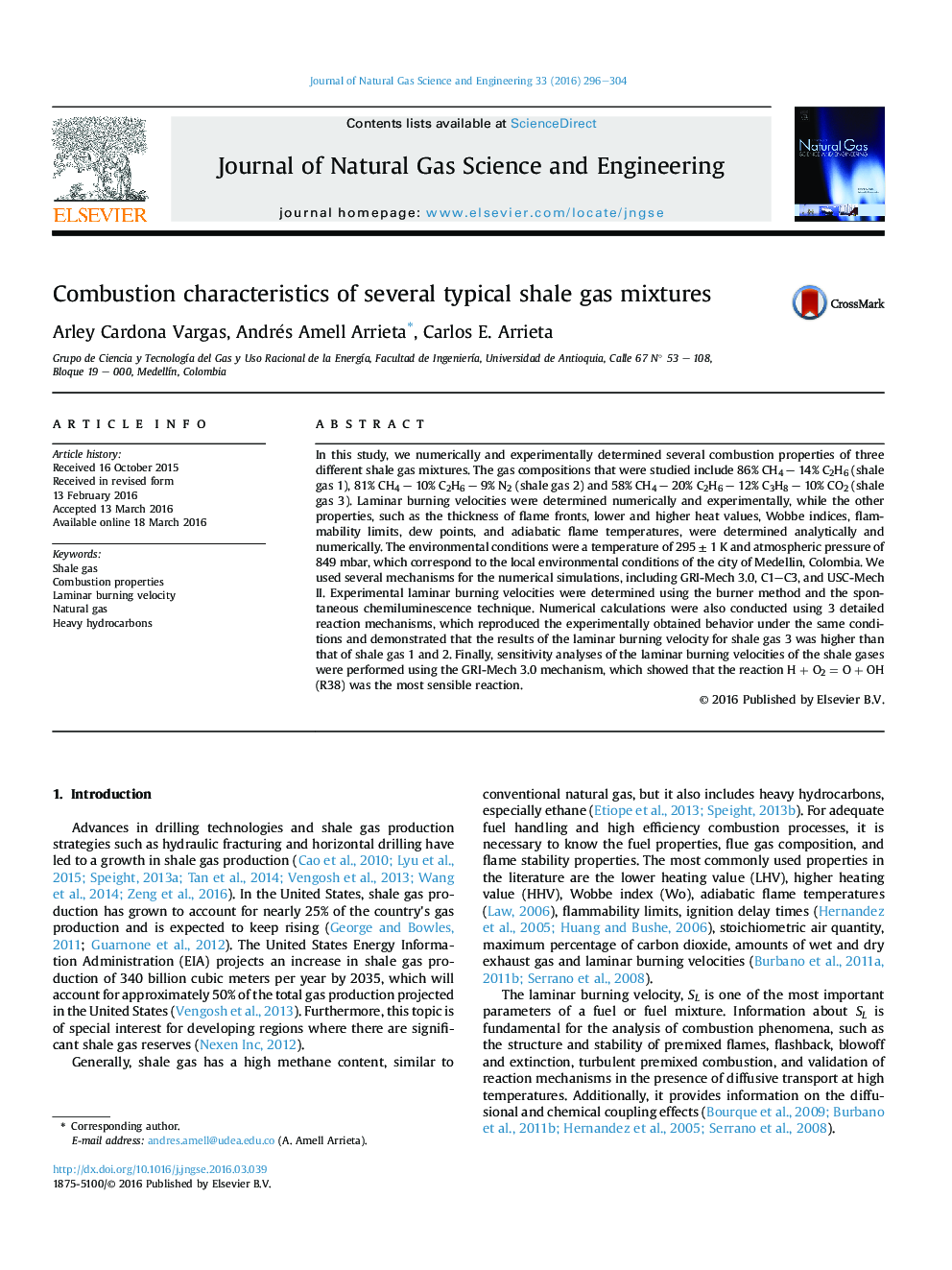| کد مقاله | کد نشریه | سال انتشار | مقاله انگلیسی | نسخه تمام متن |
|---|---|---|---|---|
| 1757068 | 1523008 | 2016 | 9 صفحه PDF | دانلود رایگان |
• Combustion characteristics of several typical shale gas mixtures were calculated.
• Laminar burning velocity of several typical shale gas mixtures were measured.
• Comparison of predictions of three chemical kinetic mechanisms with the experimental laminar burning velocity.
In this study, we numerically and experimentally determined several combustion properties of three different shale gas mixtures. The gas compositions that were studied include 86% CH4 – 14% C2H6 (shale gas 1), 81% CH4 – 10% C2H6 – 9% N2 (shale gas 2) and 58% CH4 – 20% C2H6 – 12% C3H8 – 10% CO2 (shale gas 3). Laminar burning velocities were determined numerically and experimentally, while the other properties, such as the thickness of flame fronts, lower and higher heat values, Wobbe indices, flammability limits, dew points, and adiabatic flame temperatures, were determined analytically and numerically. The environmental conditions were a temperature of 295 ± 1 K and atmospheric pressure of 849 mbar, which correspond to the local environmental conditions of the city of Medellin, Colombia. We used several mechanisms for the numerical simulations, including GRI-Mech 3.0, C1–C3, and USC-Mech II. Experimental laminar burning velocities were determined using the burner method and the spontaneous chemiluminescence technique. Numerical calculations were also conducted using 3 detailed reaction mechanisms, which reproduced the experimentally obtained behavior under the same conditions and demonstrated that the results of the laminar burning velocity for shale gas 3 was higher than that of shale gas 1 and 2. Finally, sensitivity analyses of the laminar burning velocities of the shale gases were performed using the GRI-Mech 3.0 mechanism, which showed that the reaction H + O2 = O + OH (R38) was the most sensible reaction.
Journal: Journal of Natural Gas Science and Engineering - Volume 33, July 2016, Pages 296–304
